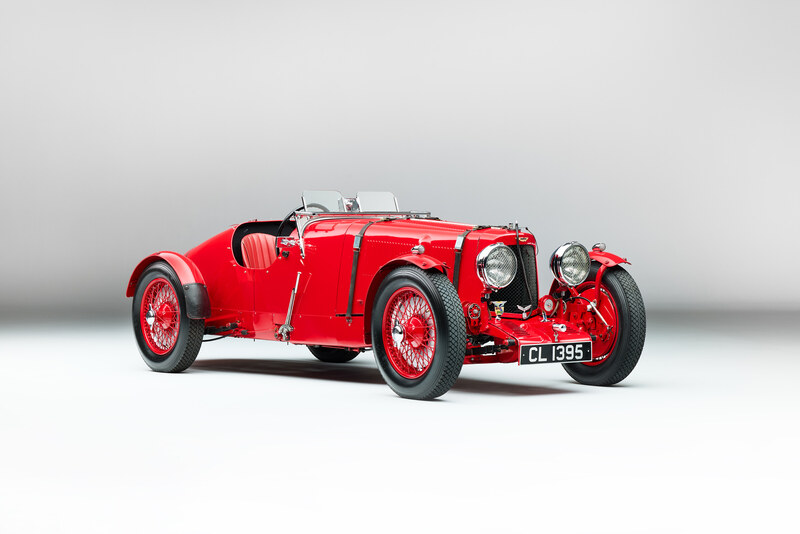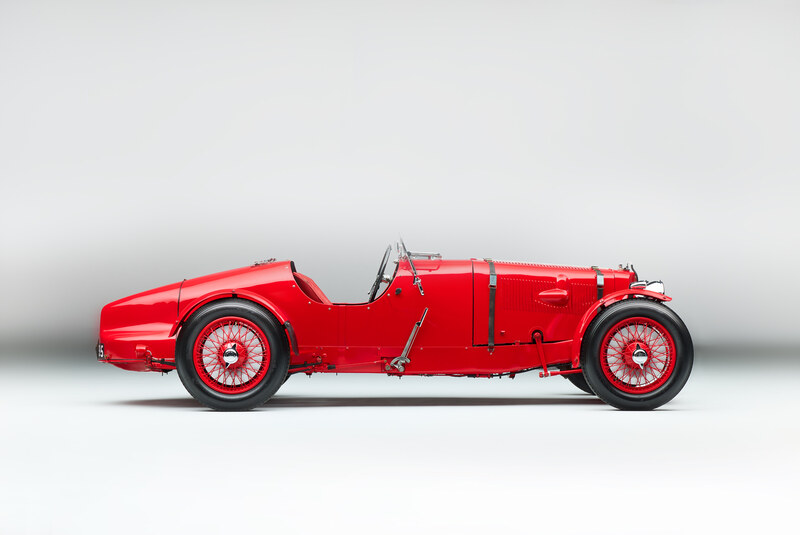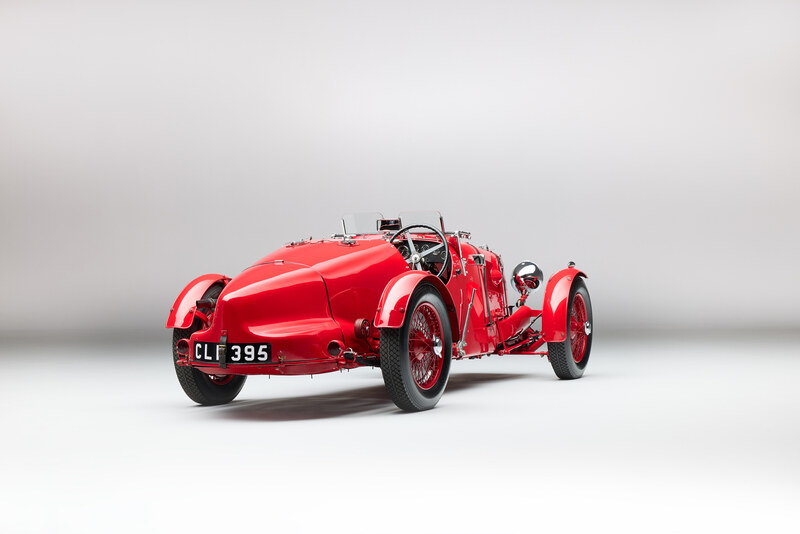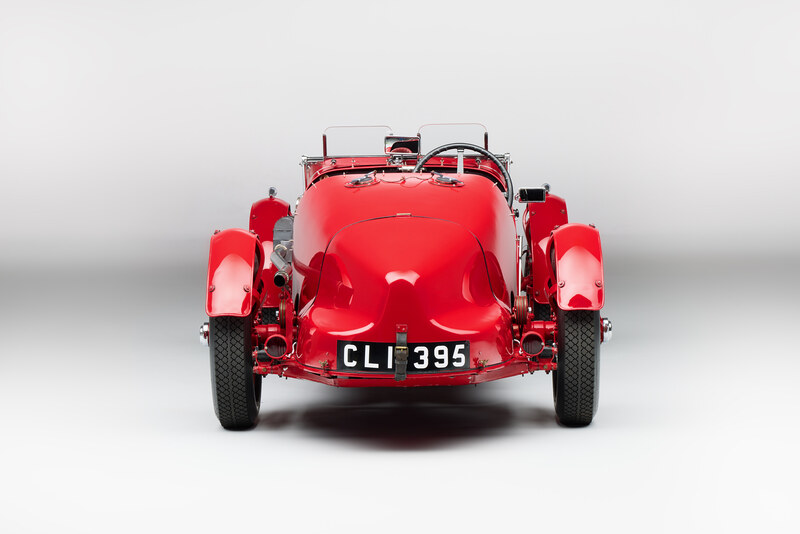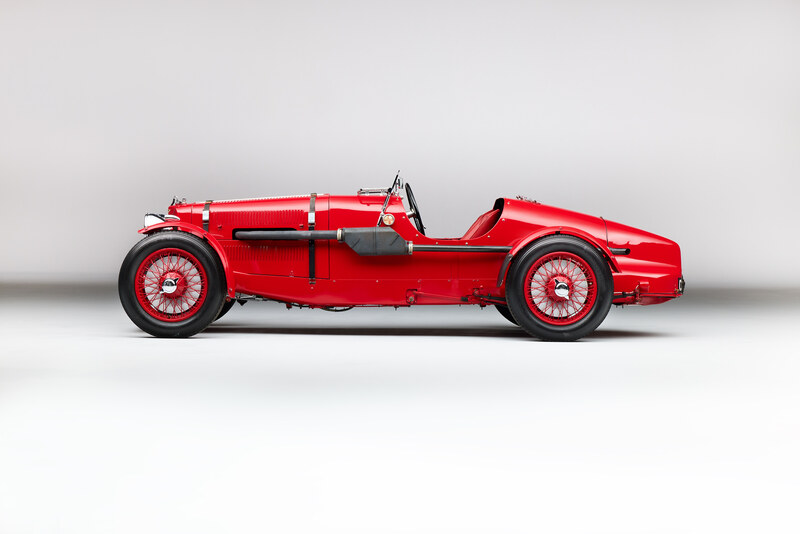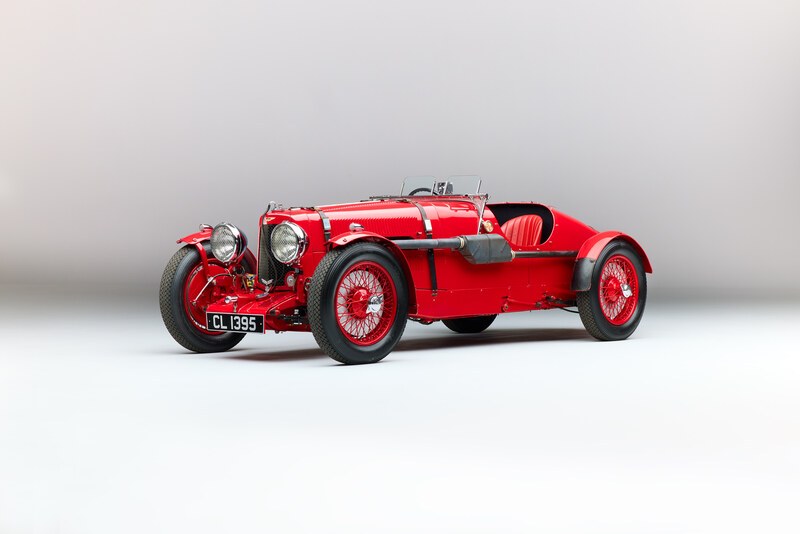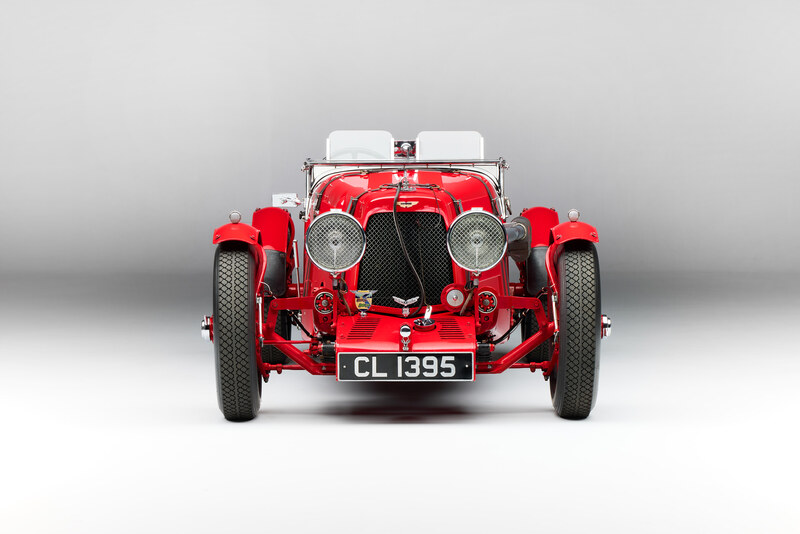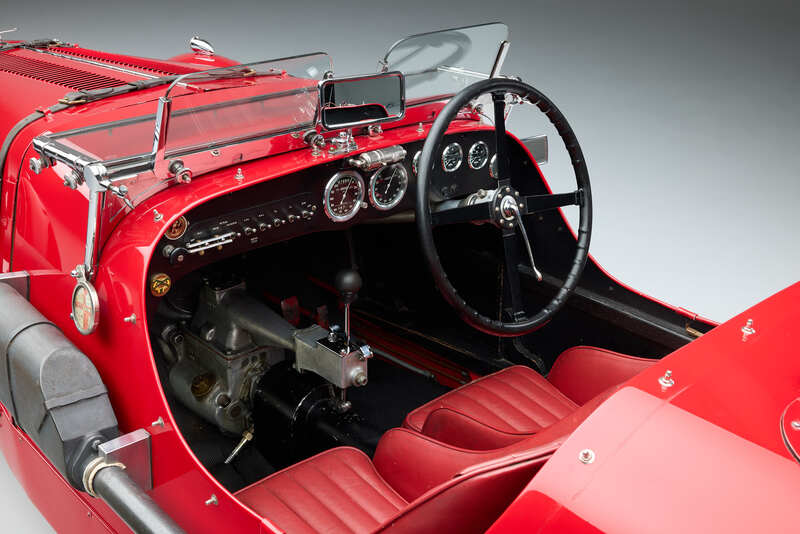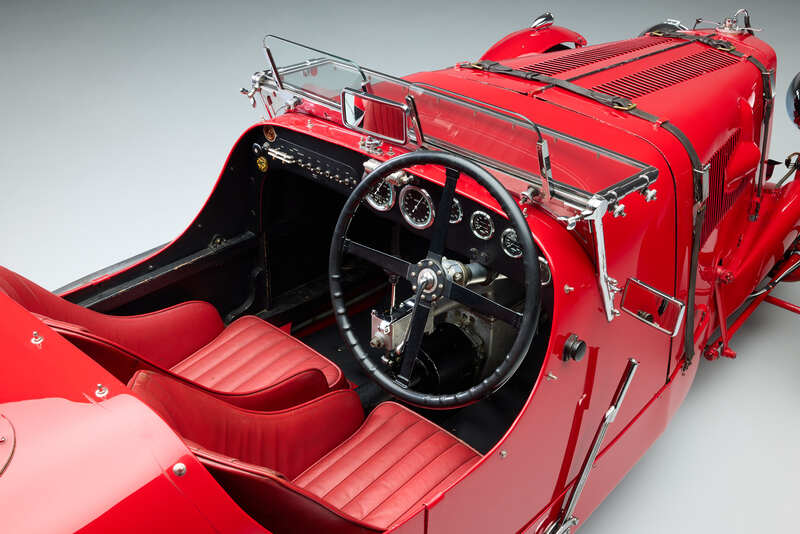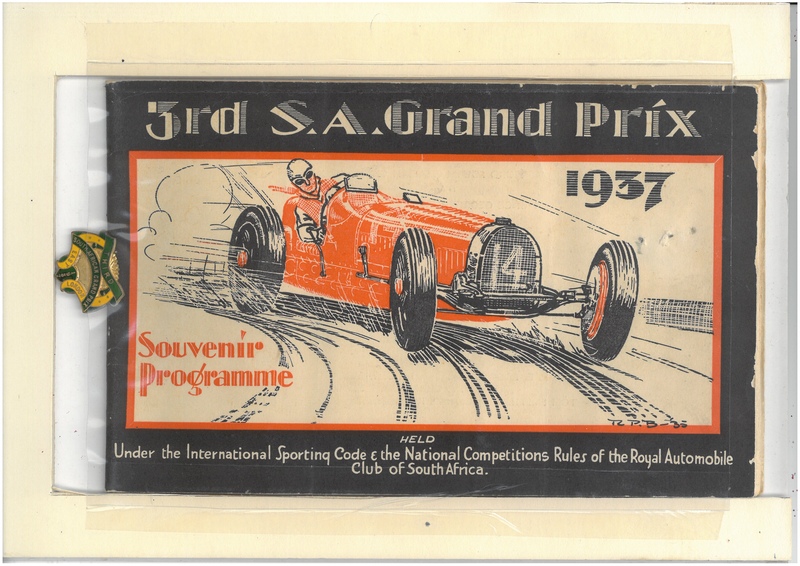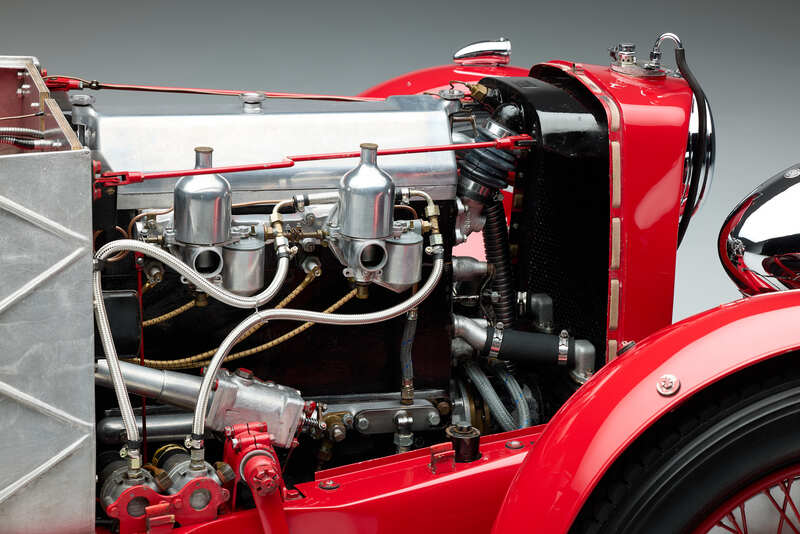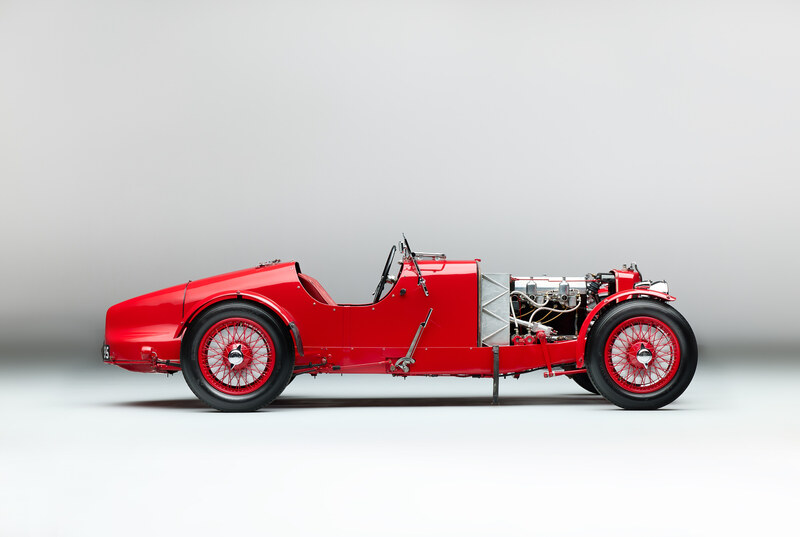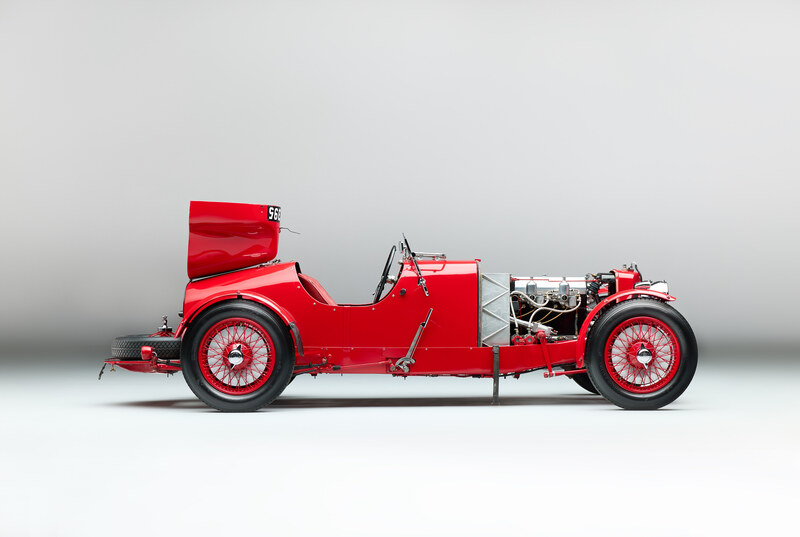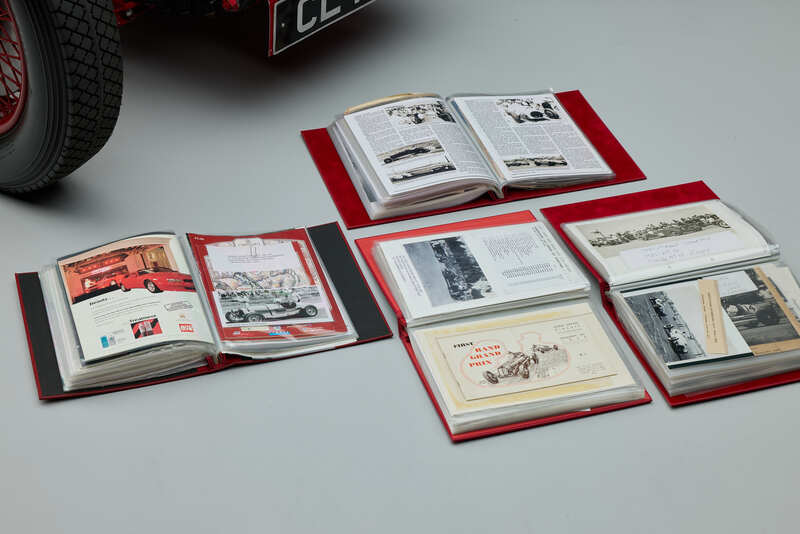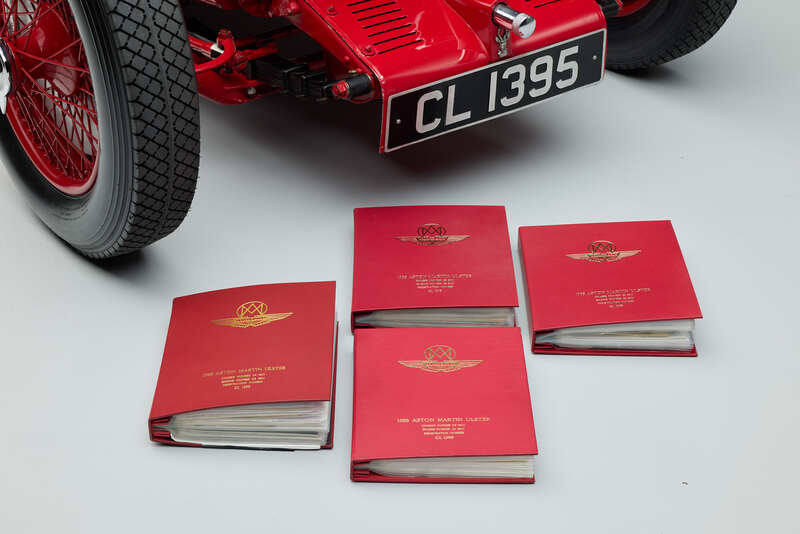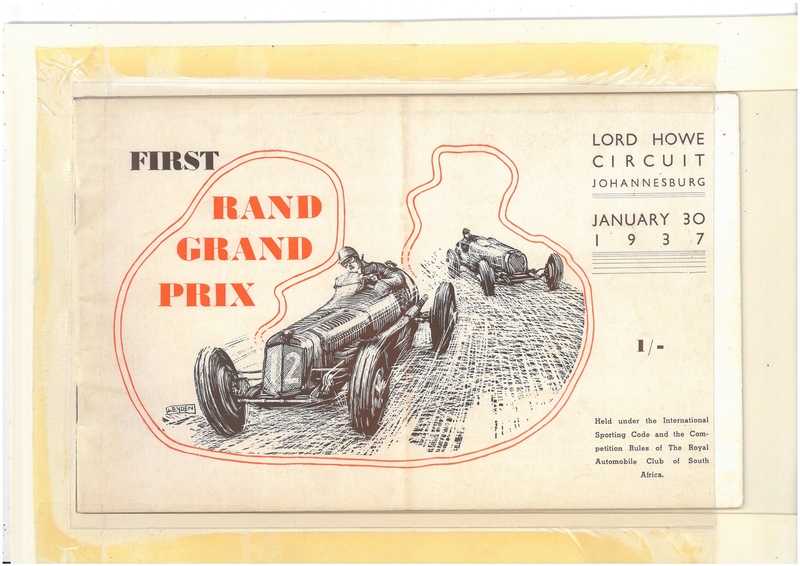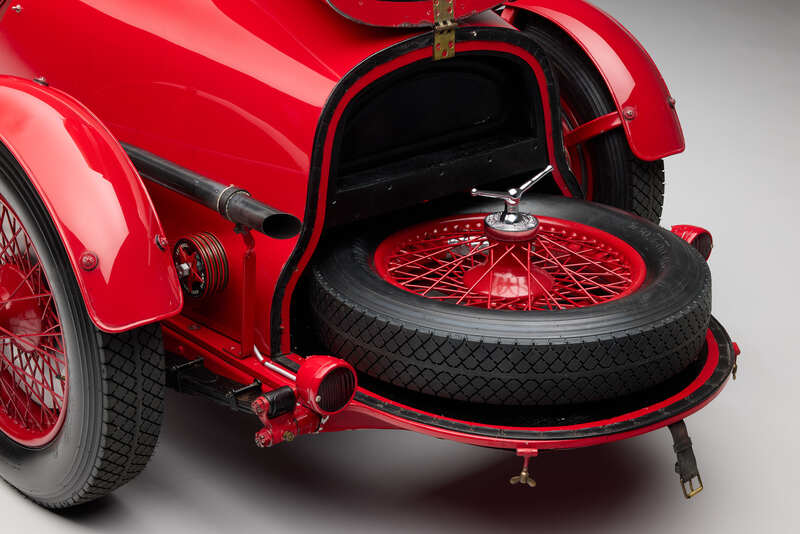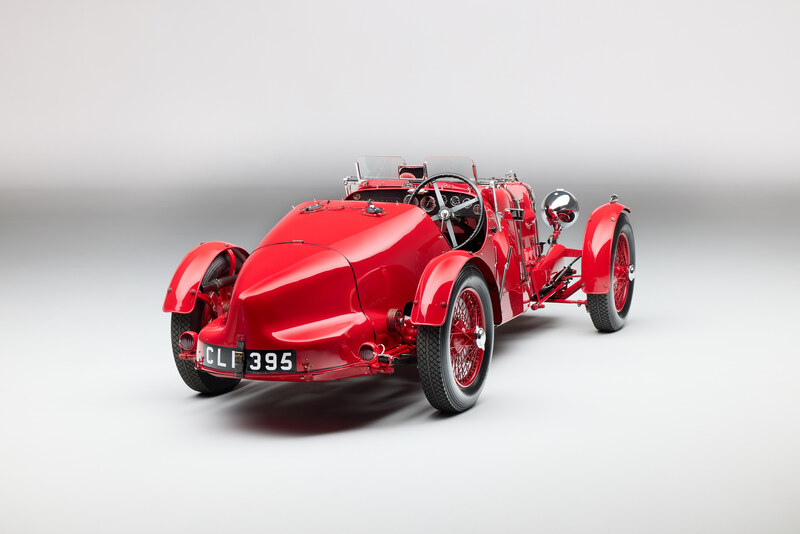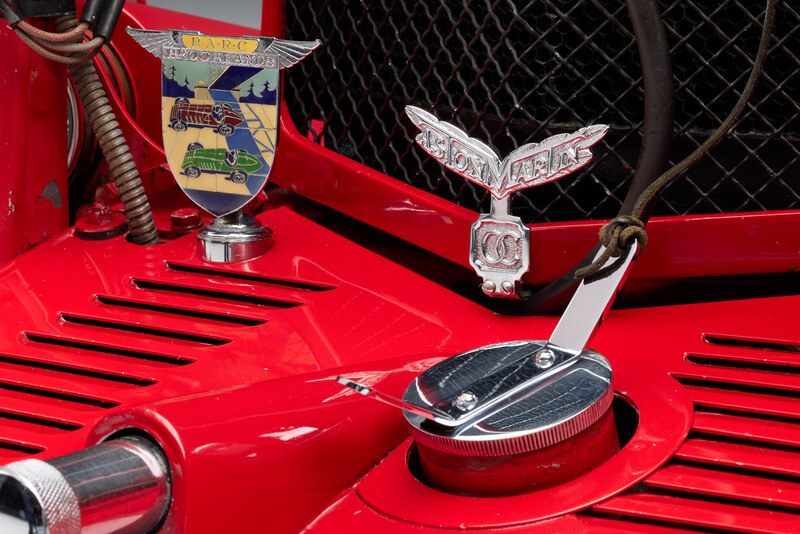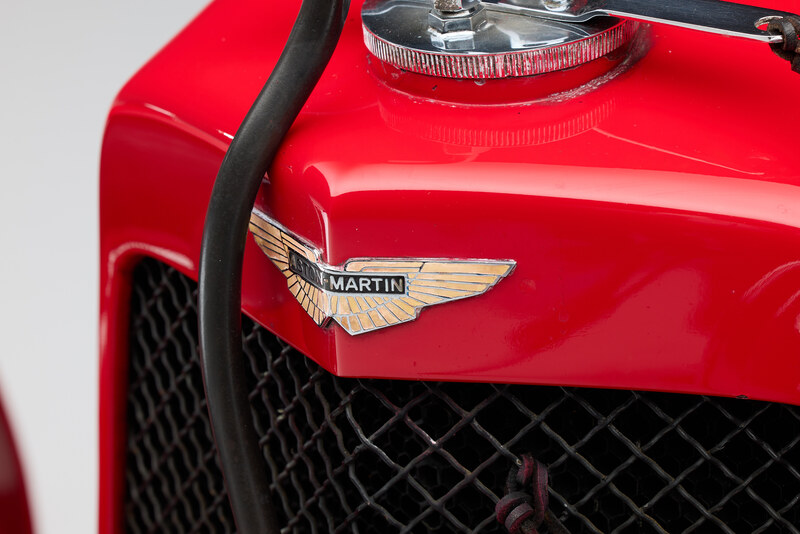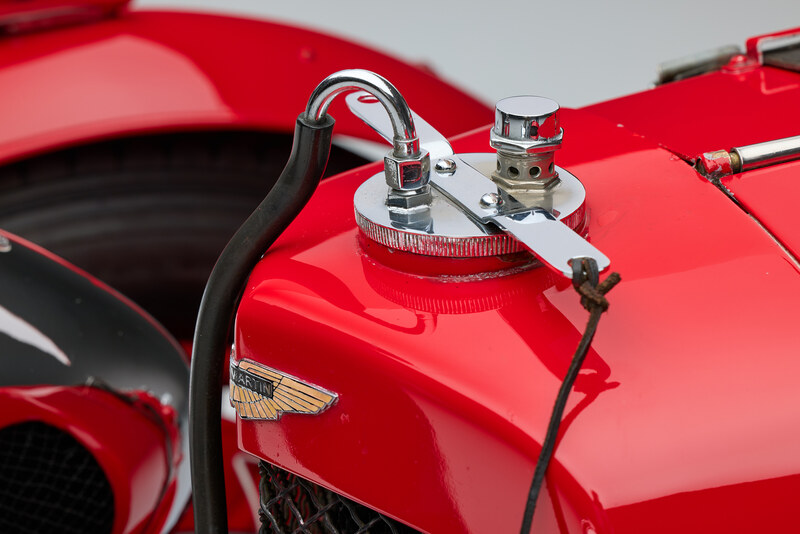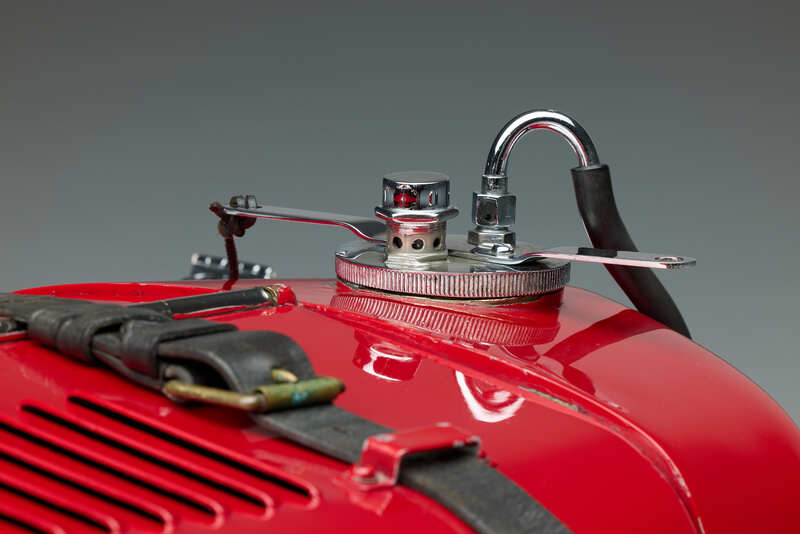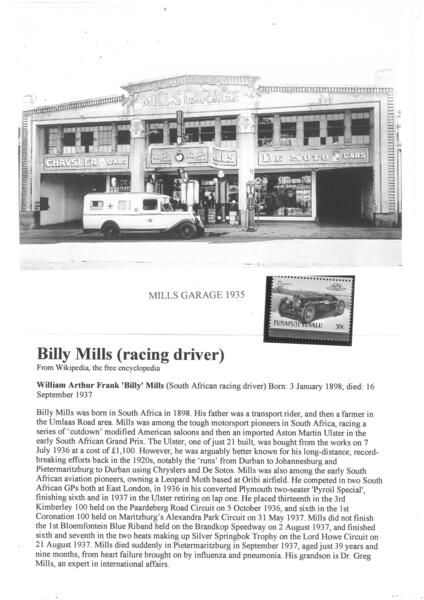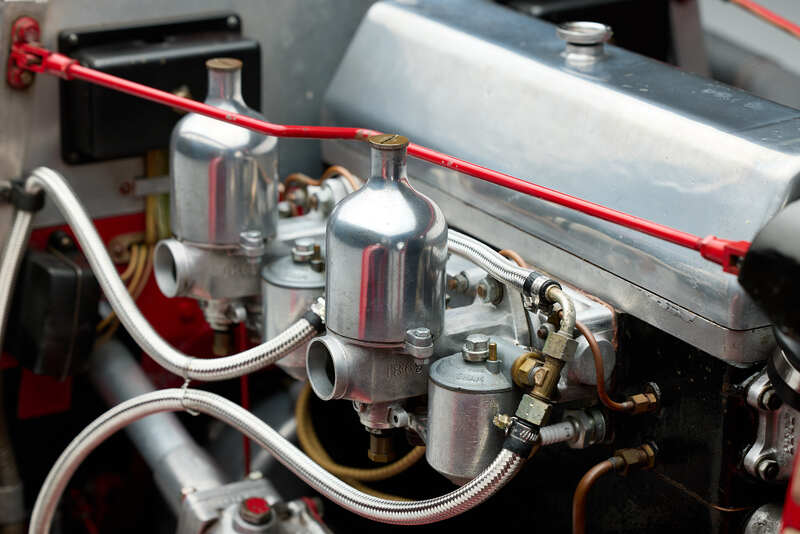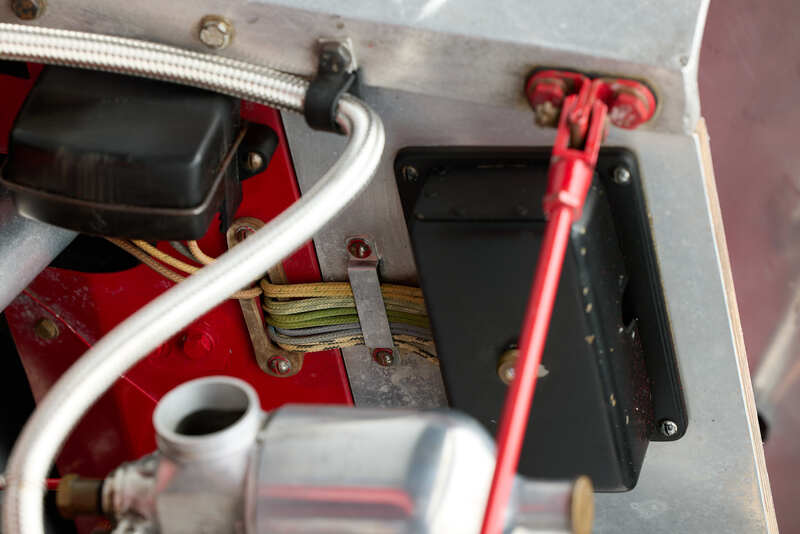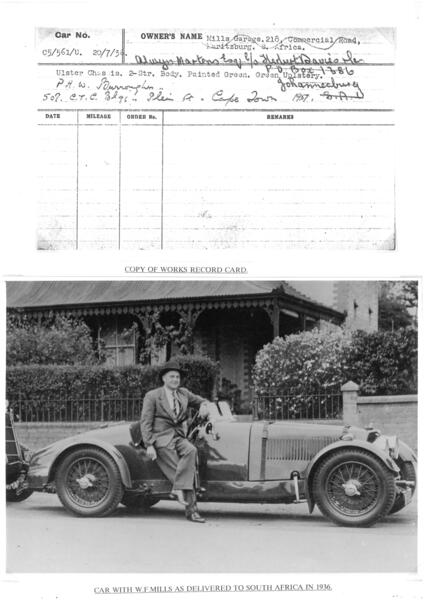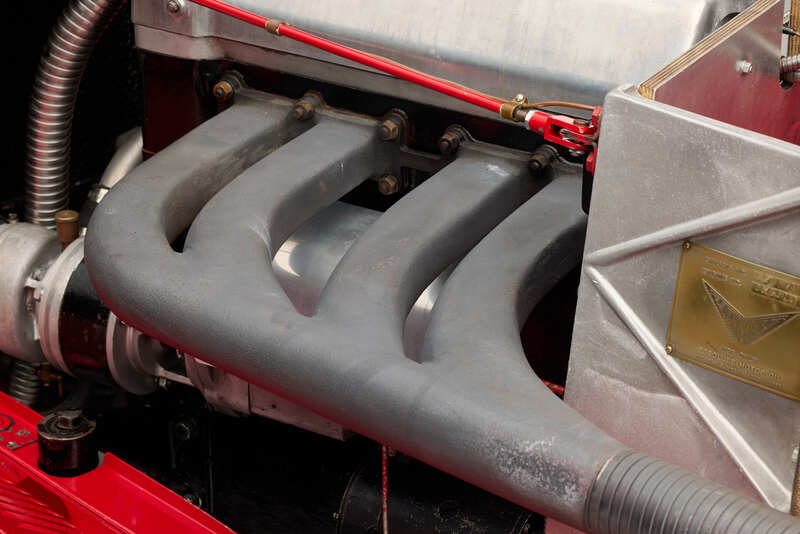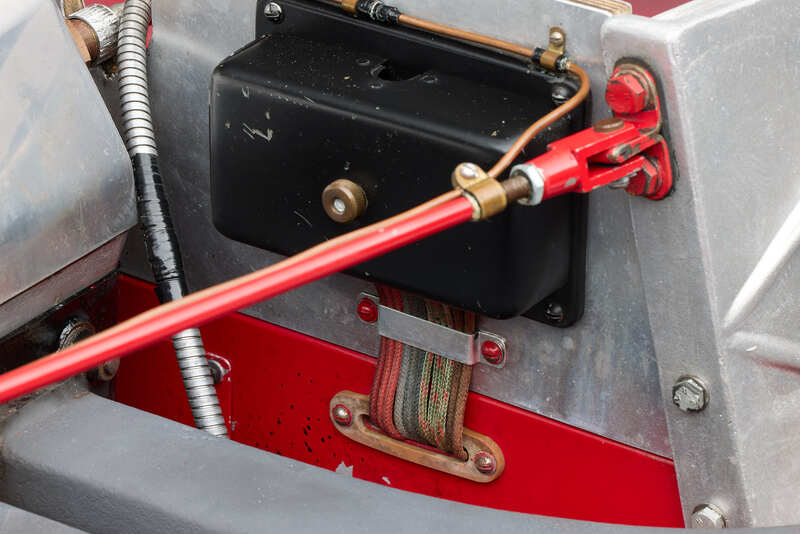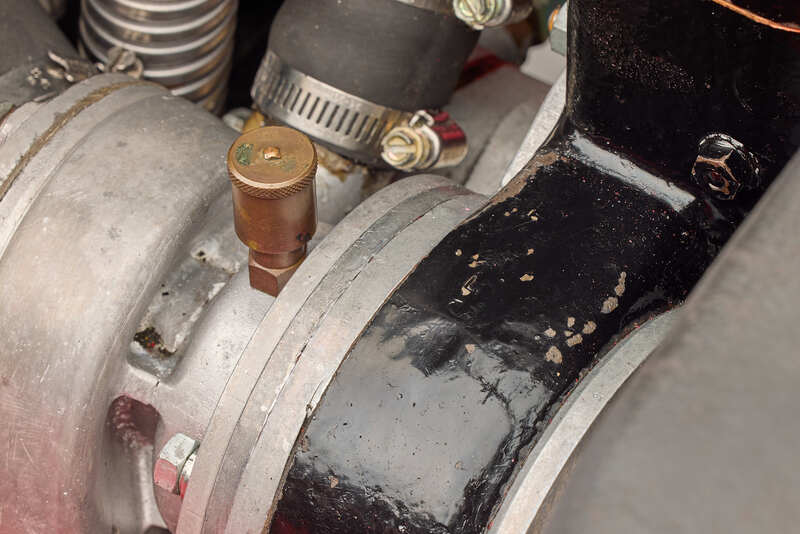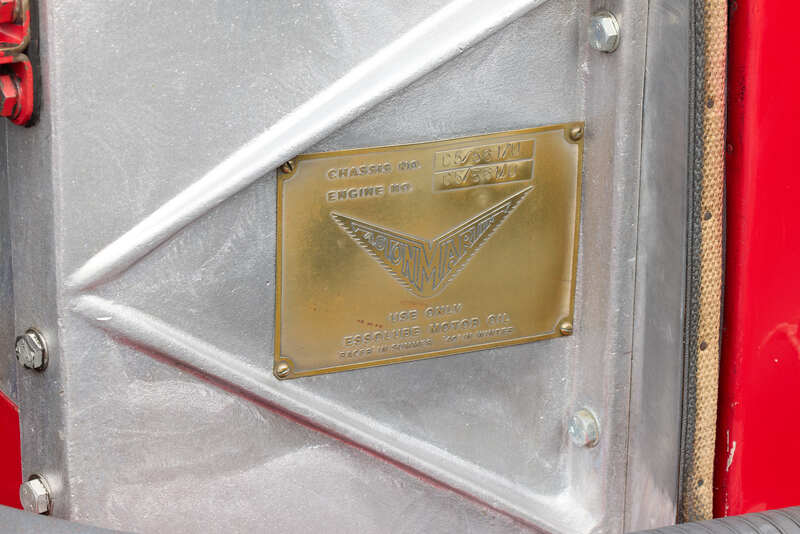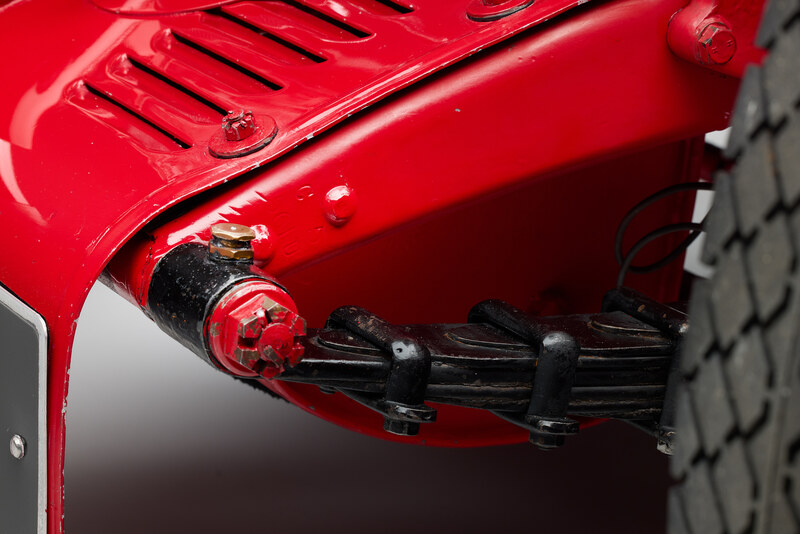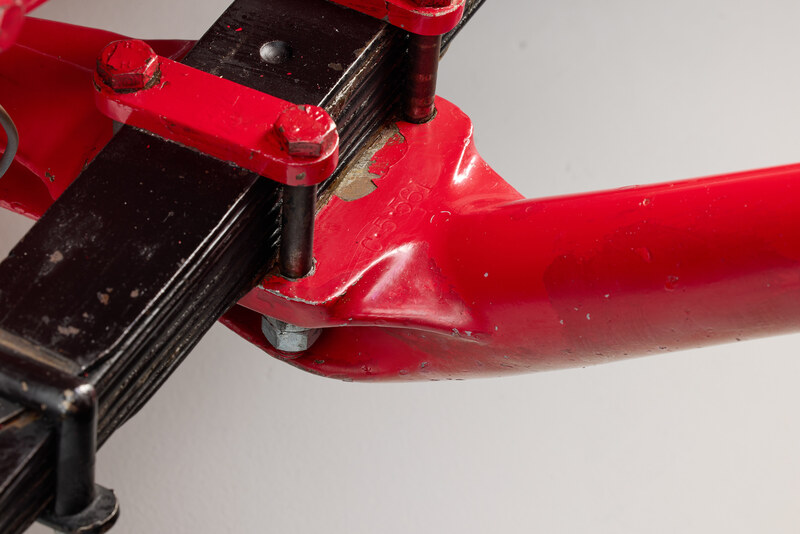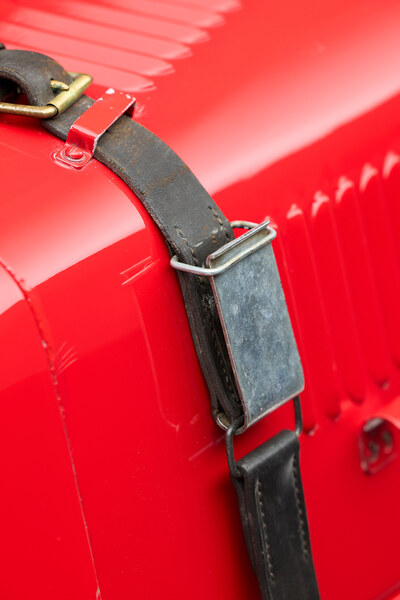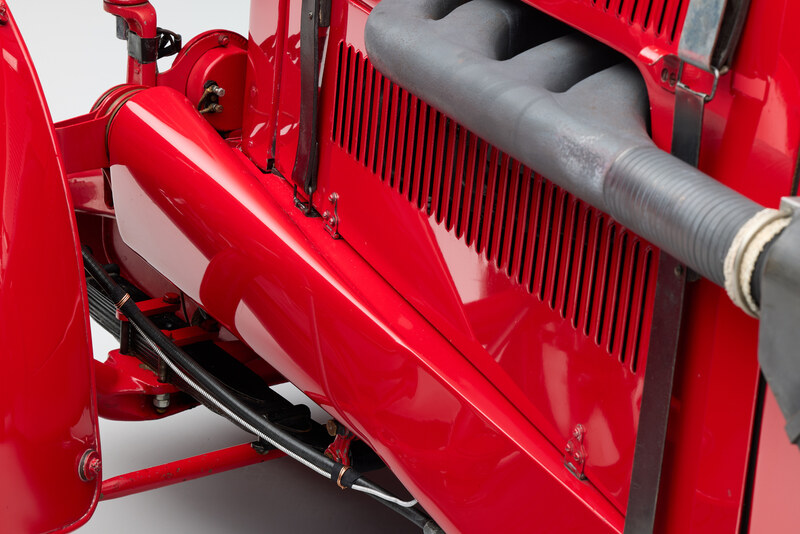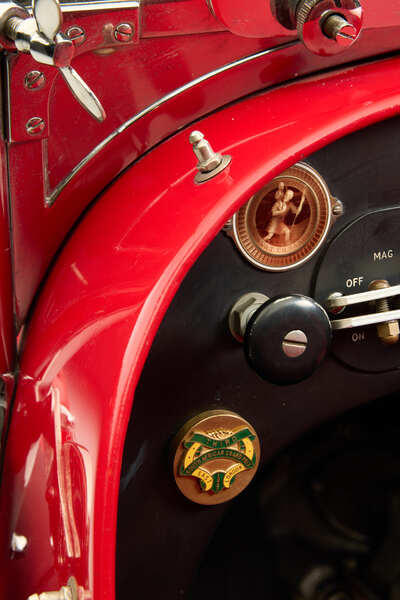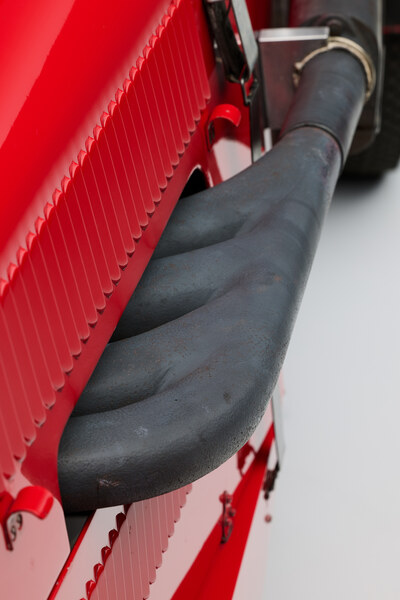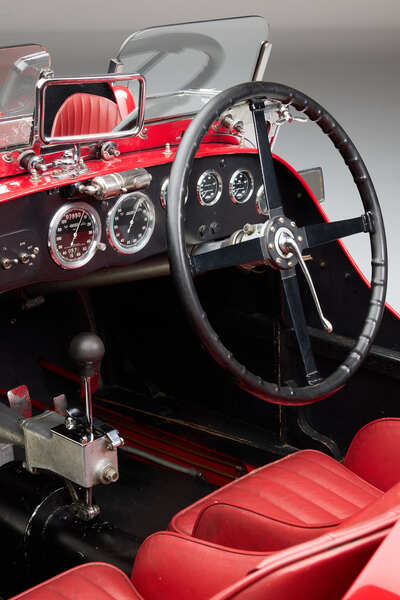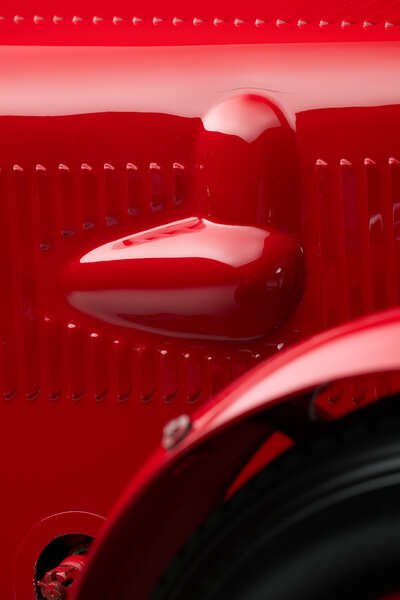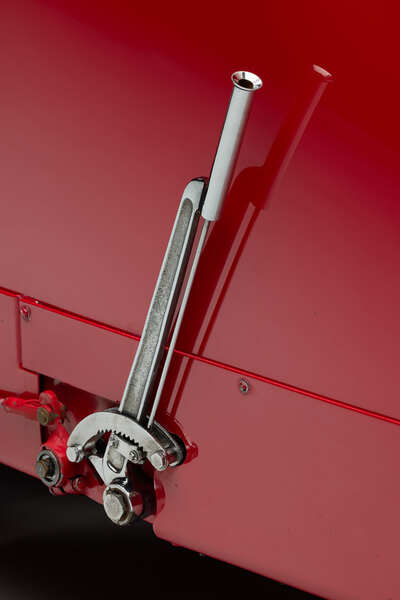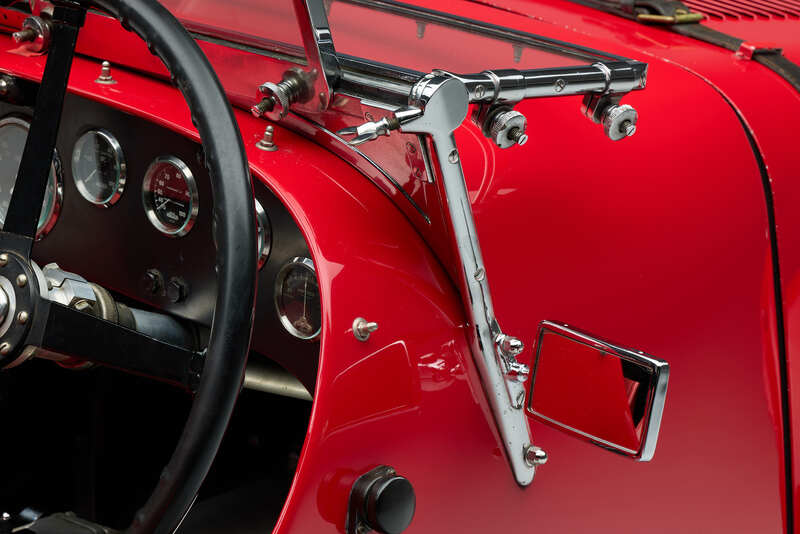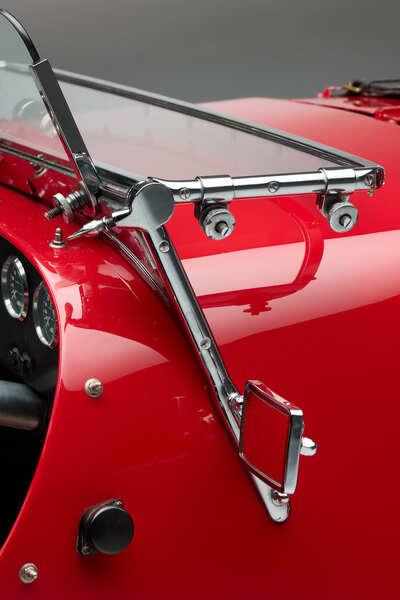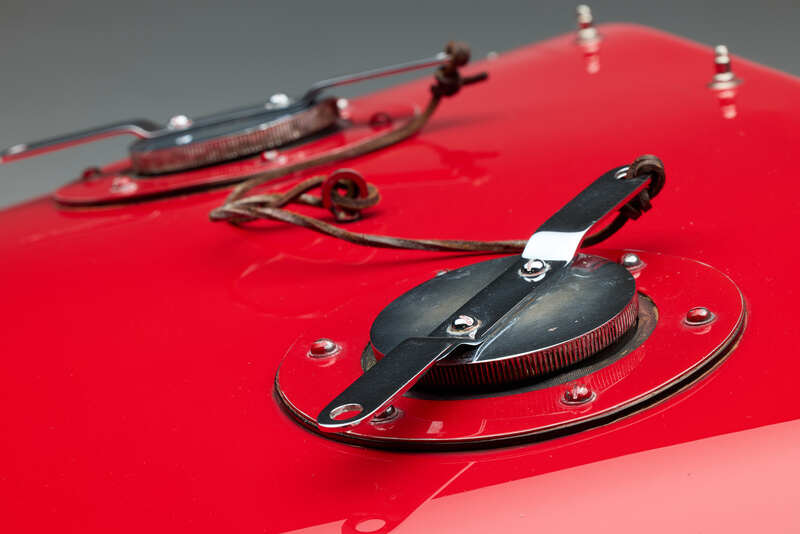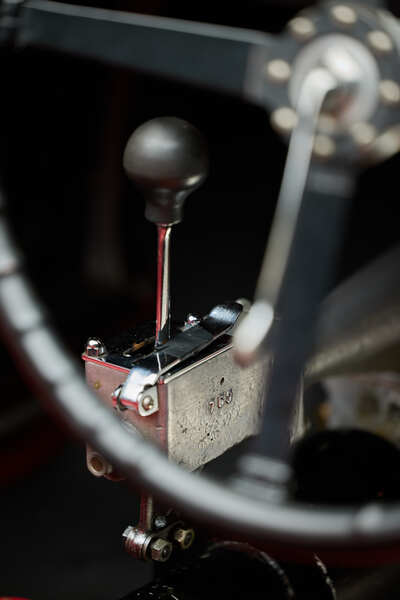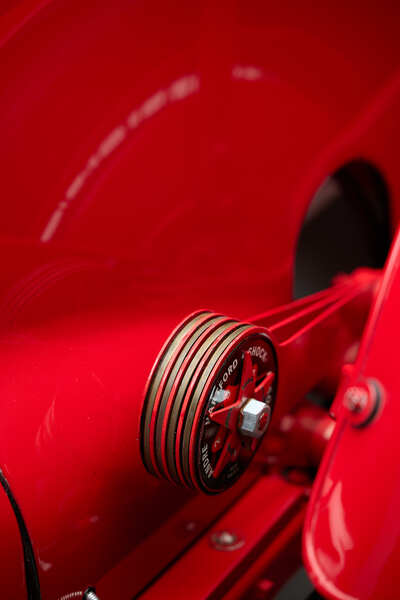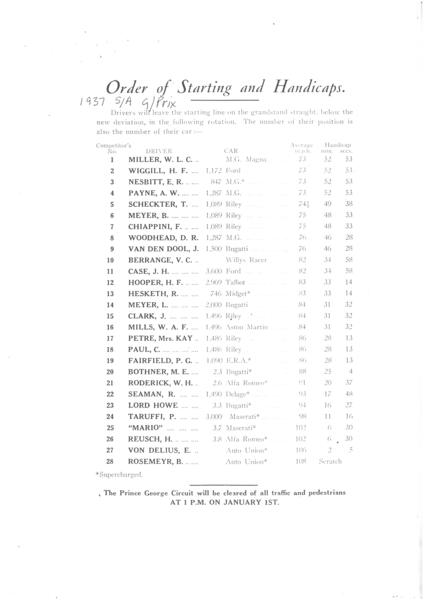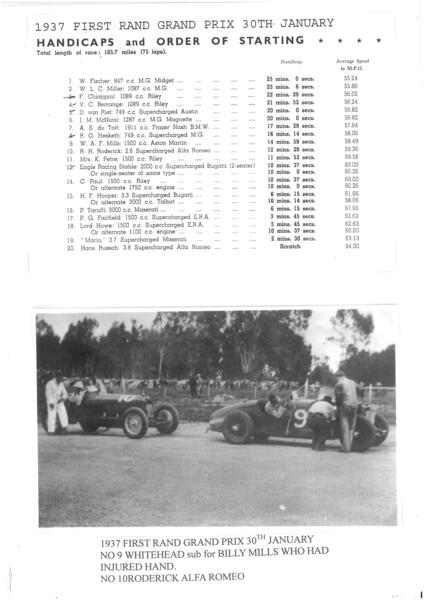
1935 Aston Martin Ulster. C5/561/U
Of all the 30 Ulsters, the low radiator is the most beautiful and one of the most sort after Aston Martins. Only 7 customer and 4 Works low radiator Ulsters were made so it is also one of the rarest.
Uniquely, chassis C5/561/U was exported new to South Africa for a busy race career lasting from 1936 to 1959. First raced in 1936 in the Kimberly 100 and then in 1937 in the 3rd South African Grand Prix against Bernd Rosenmyer in an Auto Union Type C, a Bugatti Type 59, and an Alfa 8C Monza to name a few before going on to the Rand Grand Prix, the Coronation 100 and many more. All races are carefully documented in the extraordinary history file present with the car. After the war, this car continued to be raced in ever more modified condition and with different engines, eventually reaching in excess of 130mph and with a monoposto body fitted. Re-imported to the UK and meticulously restored by Ecurie Bertelli’s predecessor, Morntane to an absolutely correct specification, C5/561/U re-commenced its racing career in 1987 with numerous notable UK events including the Coys Festival.
With this car is a truly remarkable history file. Every one of the 38 races, pre-war and post war, South African and UK is documented, mostly with original race programs. In the multi volume history file every owner is researched and most corresponded with. Very unusually, the history file even contains footage of this car racing in South Africa pre-war. There are numerous letters between the current owner and previous owners, photos of the garage belonging to its first owner in period and more recently. The unique, chassis specific copy of the Palawan Press ‘Aston Martin Ulster’ book is present along with a copy of the build sheet, original metal race spectator badges and original artwork which make for hours of pleasurable reading whilst discovering the complete history of this Ulster.
Despite the significant modifications carried out in South Africa, this is a stunningly original, fully matching numbers car. All the detail items are correct; remarkably it is still in possession of all the original features normally lost over time, original exhaust manifold, radiator pressure relief valve, aluminum steering box, correct Ulster carburetors and inlet manifold as examples. Morntane, and then Ecurie Bertelli, are the authoritative experts on pre-war Astons and have access to a library of details to ensure complete accuracy. Morntane completed the restoration to completely correct specification right down to fibre boards protecting the cotton wires as they pass through the bulkhead.
After 30 years of quiet enjoyment of this car by its current owner, Ecurie Bertelli have completed a full mechanical survey and corrected items needing attention, mostly minor in nature. Sitting on new Dunlop racing tyres C5/561/U is in very good condition with light patina. The new custodian will have a fabulous, rarely seen and highly eligible car to enjoy at the very best motoring events.
The name ’Ulster’ was first used to describe the two seater racing version of the ‘Mark II’ after the 1934 TT race held at Ards in Northern Ireland. The first four production copies of the works team cars were known as the ‘Two-Seater’ and did not yet have the distinctive chassis number ‘U’ suffix. They are however, all regarded as ‘Ulsters’ in everything but name.
The first three cars (chassis numbers LM11, 12 and 14) were built as works racing cars for the 1934 Le Mans, with a lightened chassis and a lightweight two seater body designed by Harry Bertelli, featuring a novel arrangement to stow the spare wheel, horizontally, in the tail of the coachwork. This necessitated a slight widening of the tail around the spare wheel producing the distinctive shape of the bodywork at the rear. The wings were lightweight cycle type, secured to the wing stays with ¼" bolts with rubber washers each side of the wing topped by a large steel cup washer. In view of problems in previous years, particular attention was paid to the way the wing stays were attached to the brake back plates. They sat on beaded leather strips, with rubber filled bronze bushes each side of the wing stay and were secured by a split-pinned slotted nuts. The ‘Ulster’ was a very carefully thought out and purpose built sports racing car. They are well balanced and are very easy and comfortable cars to drive. This was particularly important for long distance motor racing and it must have been a contributory factor to the great success these cars had in long distance events, including at the TT, Le Mans, the Mille Miglia and the Targa Abruzzo.
